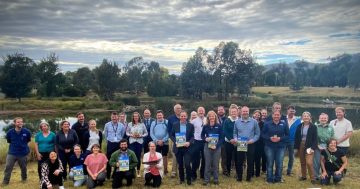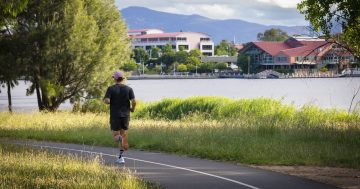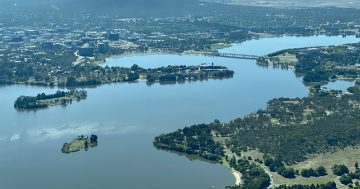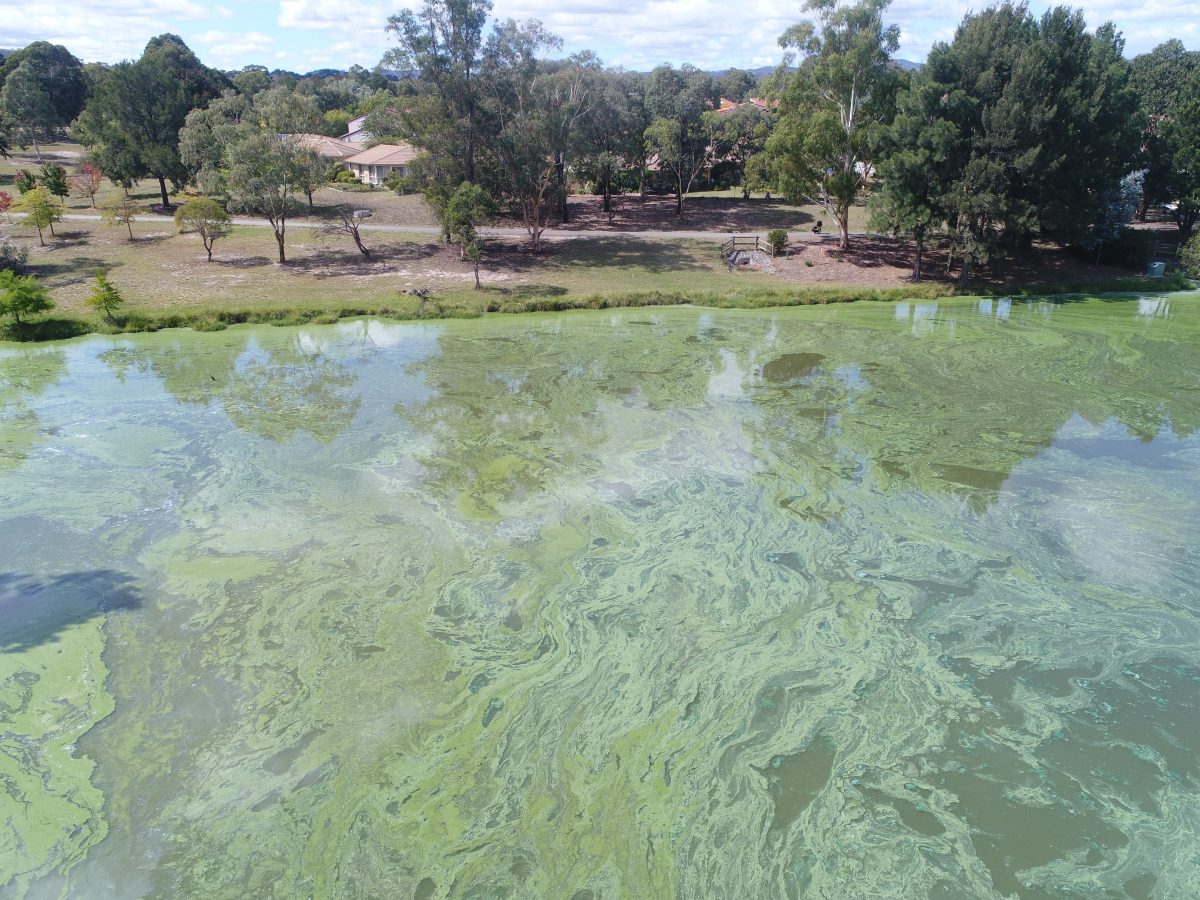
Lake Tuggeranong in 2019: algal blooms have long been an issue, but nothing seems to change. Photo: Alica Tschierschke.
Better monitoring, more ‘teeth’ for the Office for Water, more appropriate targets, recycling organics and sand, increased street sweeping and a focus on evidence-based solutions.
They are just some of the solutions put forward by the Canberra Liberals in a new discussion paper saying enough is enough (yet again) with a lack of progress on fixing longstanding water issues in Lake Tuggeranong.
A discussion paper commissioned by Opposition spokesperson for environment, heritage and water Nicole Lawder has put forward multiple ideas she hopes will finally help improve the state of lakes and waterways.
Ms Lawder, also a Member for Brindabella, said most of the proposed solutions are related to Lake Tuggeranong as it has the worst water quality of all of the lakes and rivers across Canberra.
But she said changes would help all of the Territory’s waterways.
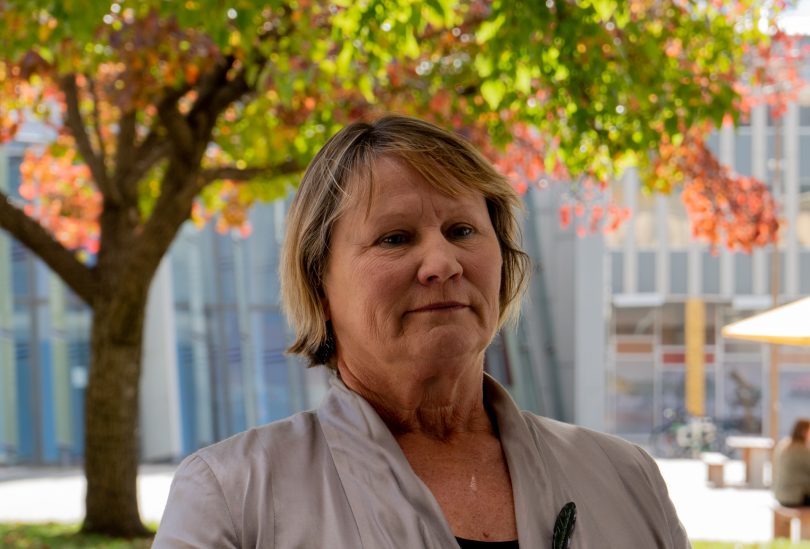
Opposition spokesperson for environment, heritage and water Nicole Lawder has released a discussion paper filled with proposals to help fix longstanding water quality issues in Lake Tuggeranong. Photo: Region Media.
“As a proud long-term Tuggeranong resident, I know how valued the lake and its surrounds are by our Southside community. I remember when my family used to go for a swim in Lake Tuggeranong and it’s disappointing that families today can’t share those same wonderful memories,” Ms Lawder said in a statement.
“Over the past 25 years, the poor water quality of Lake Tuggeranong has been the subject of media reports and an increasing concern to residents.”
She acknowledged the years of work and effort that the government had put into trying to improve water quality, but she queried the usefulness of almost a decade of taxpayer money – to the sum of $35 million – being spent on “solutions” which weren’t having a measurable effect.
Ms Lawder said most of the solutions proposed in her discussion paper had previously been floated with the Territory government, but they had rejected them up to date.
The discussion paper from Independent Water Management Services’ Ross Knee stated that inadequate monitoring systems, poor planning, unrealistic water quality targets and limited reporting were of particular concern.
The paper suggested increasing monitoring of waterways across the Territory and took aim at the fact the government had stopped annually reporting on recreational water quality in 2015.
It also claimed current monitoring systems were inadequate.
A last resort, she suggested, should be spending money on assets like floating wetlands as they cost so much and it was still unclear whether they were worth the expense.
The paper, which it was stressed should not be interpreted as Canberra Liberals’ future policy, suggested current assets could be modified to capture organic material and remove it from water courses.
More street sweeping could go hand in hand with this, it said, as well as working with community groups to keep leaves out of waterways, and more should be spent on monitoring the entire system of waterways and reporting on what is found.
Current “unrealistic water quality targets” were also raised in the report. For example, the paper suggested lowering the target for phosphorus in lakes from the current <0.1 mg/L to 0.035 mg/L.
It said the current target is three times what is required to reduce the risk of algal blooms.
The paper also described the current approach as problematic due to “disparate responsibilities” across different directorates.
It suggested a single authority be set up to manage all water assets.
The government did last year announce a central water hub would be set up to fix what Water Minister Shane Rattenbury described as “policy disjoint“.
A further suggestion was that the next stage of the ACT Healthy Waterways program should be focused on identifying and quantifying pollutants and the efficacy of existing treatment systems.
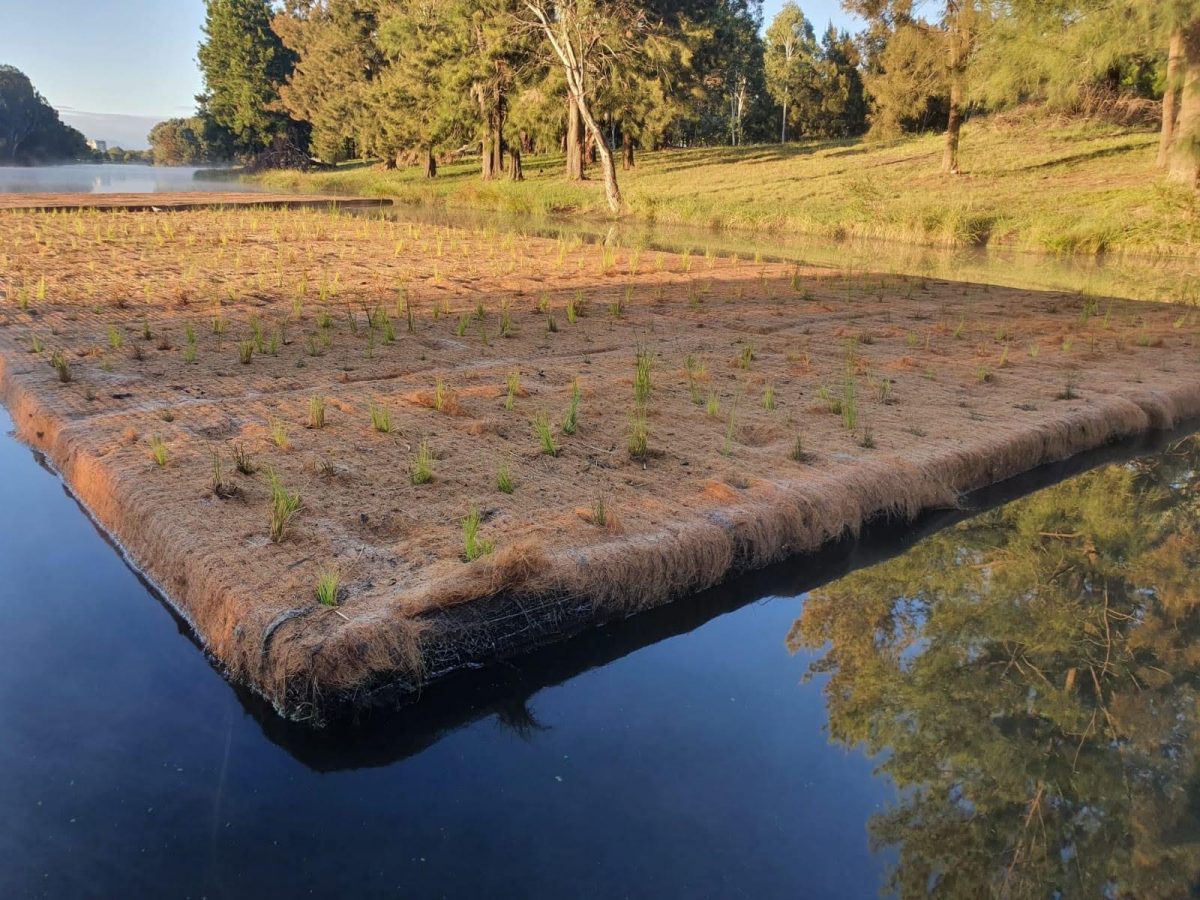
The Tuggeranong floating wetlands were installed in 2021. Photo: ACT Government.
The most recent (2021) ACT Waterwatch Catchment Health Indicator Project (CHIP) annual report found that Lake Tuggeranong had its lowest water-health rating to date. It earned a D-minus.
At the time, a water quality expert at the University of Canberra, Dr Rod Ubrihien, said it was important not to jump to conclusions, especially after such a wet year.
Dr Ubrihien said that fixing the longstanding problems of the lake would take a long time and lots of research.












